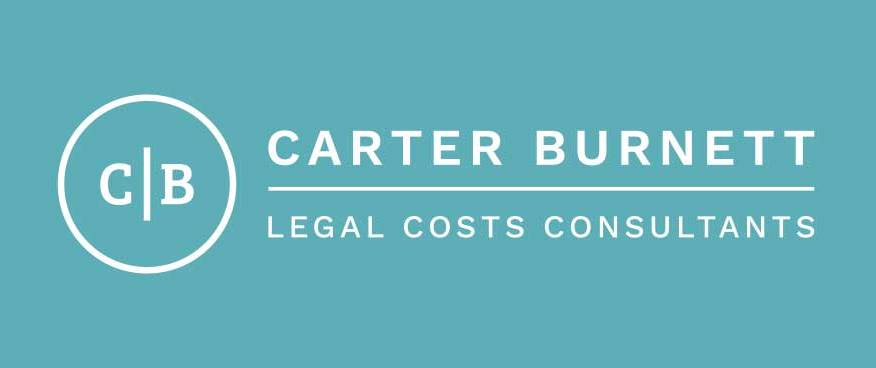Understanding the new electronic Bill of Costs
Posted on 4th January 2021 at 10:20
By Lee Carter, specialist Costs Draftsman
Solicitors often find the electronic Bill of Costs a complicated form to understand and complete with confidence.
In our experience, this is due to the number of complex entry fields and the fact it is a highly-specialist area of the law.
Not to mention the implications of getting it wrong!
Why was the electronic Bill of Costs introduced?
The introduction of the electronic Bill of Costs was meant to have a handful of main advantages:
Provide more transparency – see amount of costs claimed clearly
Be more user friendly & make it easier to alter figures
Cost less to prepare
Bring consistency to the procedures and systems used for costs budgeting, cost management, summary assessment and detailed assessment.
When should the electronic Bill of Costs be used?
The electronic Bill of Costs became mandatory from 6 April 2018 and applies to Part 7 multi-track claims.
The Civil Procedure Rules (CPR) stipulate that any work undertaken after 6 April 2018 must be detailed in an electronic spreadsheet format.
Work undertaken before 5 April 2018 can be claimed in the old-style Bill of Costs though by doing so it means that you end up with two separate Bill of Costs as opposed to a single document which incorporates everything.
There also a number of exemptions which are helpfully set out at CPR PD 47 5.1(a):
The new electronic Bill of Costs must be used if:
(a) the case is a Part 7 multi-track claim, except —
(i) for cases in which the proceedings are subject to fixed costs or scale costs;
(ii) cases in which the receiving party is unrepresented; or
(iii) where the court has otherwise ordered
If you’re ever uncertain about what format applies in your set of circumstances, we would be happy to advise you – with no obligations.
In our experience, the process makes it much easier for all parties to understand where costs have been incurred, particularly when a Costs Budget has been approved or agreed. But the extra transparency means any work undertaken will face more scrutiny than ever before.
How should the e-Bill be prepared?
At Carter Burnett, our experienced Costs Lawyers use the new electronic Bill of Costs every day.
The electronic Bill of Costs requires a series of codes to be used.
For time, these codes comprise of ‘Phase, Task and Activity’.
For disbursements, the codes are ‘Phase, Task and Expense’.
Time and disbursements have to be detailed on a line-by-line basis, so it’s important that solicitors’ files demonstrate all of the time which has been spent. If it does not then it will expose vulnerabilities at assessment.
Each 'phase' used in the electronic Bill of Costs mirrors those of a Precedent H. Done correctly this can save time and expedite settlements of costs.
There are also some additional phases for time which fall outside a Precedent H:
Interim Applications and Hearings
Funding
Budgeting including costs estimates
Costs Management Conference
Costs Assessment
It is important to utilise the correct codes and where necessary to apportion time.
Good time recording will help with the efficiency of preparing the electronic Bill of Costs, but it’s important that the correct codifications are used. Otherwise you could face challenges from the Paying Party and could also create inconsistencies with the Precedent H which could impact on what is and is not recoverable.
To maximise your costs recovery, we can help guide you through this often confusing process.
What happens if you get it wrong?
Make no mistake, the electronic Bill of Costs will be challenged.
That’s why it is vital to ensure every aspect is as accurate as possible – and is presented in a way that justifies the time which has been spent.
The electronic Bill of Costs gives Paying Parties an extra layer of detail which means costs face more forensic scrutiny.
A poorly drafted electronic Bill of Costs will be exploited by Paying Parties.
Getting the electronic Bill of Costs wrong can:
See you lose out on otherwise recoverable costs and reduce costs recovery.
Cause you to redraft your Bill of Costs, leading to delays in settlement, possible adverse costs and even sanctions.
A properly drafted electronic Bill of Costs will assist in maximising costs recovery and help improve cash flow.
Why should I use a Costs Lawyer?
Practitioners are always under pressure to prioritise their clients and active caseload.
Enlisting the help of a Costs Lawyer will save valuable time.
Work in partnership with Carter Burnett and our costs experts will handle EVERYTHING on your behalf.
We can do ALL work relating to the costs – and we will ensure it is performed in a compliant and robust manner.
The time spent preparing the electronic Bill of Costs is included as part of the costs claim and is recoverable from the Other Side. This means you have the benefit of an expert on your side whilst the costs incurred are claimed in addition and separately to your own.
By law, any Bill of Costs must be certified by the practitioner. If anything is wrong, they are the person who will usually bear the responsibility for it. The sanctions can be severe and are at the discretion of the Court.
Compliance is always the best form of defence. By enlisting our help, you can be assured of peace of mind and expert guidance throughout the entire process.
With our professional help and advice, you can rest assured that an accurate Bill of Costs will be prepared on time, every time. And we will always fight your corner.
To discover how we can ease the complex costs burden, get in touch or call (01482) 534567 for an informal discussion.
Share this post:


